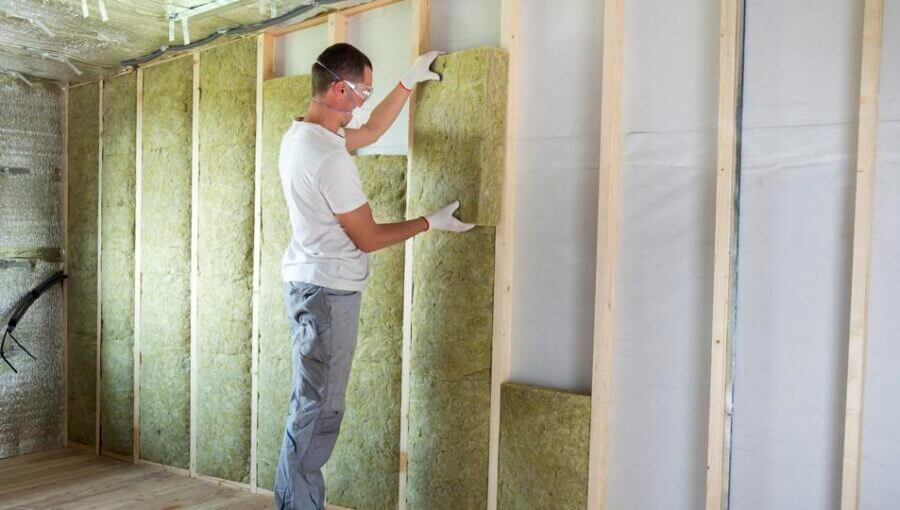
If you’re looking for ways to save money and make your home more comfortable, insulating your home is one of the best investments you can make. Insulation can be as easy as installing a few rags in strategic locations around your house. It’s also important to keep your family safe from carbon monoxide poisoning and other health hazards. Here are a few things you must know about home insulation.
Know the Different Types of Insulation
There are many different types of insulation you can use in your home, from fiberglass batt insulation to spray foam batts to cellulose batts. Each type has its own benefits and drawbacks. The best choice for you depends on what you’re trying to do with your home and how much money you have available for the project. To find the right products, go to Materials Market and pick what works.
How to Insulate Your Home
Get an Energy Audit
You might be surprised by the amount of energy you’re wasting in your home with ring doorbells. This is important information because it will help you know what to fix and where to start. To find out if you’re spending too much on heating and cooling, contact a local company for a comprehensive audit of your home’s condition.
Get Your Attic Insulated
The attic is one of the best places to target if you want to reduce your energy bills. The problem is that attics are usually dark, and it can be hard to insulate them properly. To make this process easier, hire a professional insulation installer that knows what they are doing. They should also have the needed materials, such as spray foam or cellulose batts. Most of them employ sustainable building materials.
Get Your Windows Insulated
If you don’t have many windows in your house, it’s not a big deal, but some homes have more drastically than others. Windows are great places for heat to enter, making your house feel stale and uncomfortable even in wintertime.
Use Spray Foam for Attic Insulation
Spray foam insulation (SFI) is a great option for homeowners looking for an easy way to insulate their attic space in just one day! It’s applied directly between your roof decking and the ceiling joists to seal any gaps that will allow warm air inside your home. It also provides a higher R-value per inch than other types of insulation, so you’re getting more bang for your buck.
What’s more? It’s very easy to install yourself. There are several do-it-yourself (DIY) spray foaming kits available on Materials Market that simplify every step of the installation process while still providing professional results.
Consider Foam-in-Place Insulation for Expandable Spacing Capacity
It’s one of three types of insulation you can use on open wall cavities such as joist bays and rafters where there are large gaps between studs or rafters and inner walls. It’s also used on ceiling joists to create an insulated airspace between the subfloor decking and the rafters underneath it. Building science shows that when this approach is done correctly, it can greatly reduce the number of heat and water leaks in homes built partially or entirely with open-air cavities.
Always Maintain Your Home’s Insulation Levels
You can often find out how well your home is insulated by checking out the labels on your windows, doors, and other openings in your home. These labels should tell you the type of product used to insulate those particular openings. For example, if you have double-pane patio doors, they’re likely to be coated with foam or plastic. You’ll want to determine if these will be enough insulation to keep your home warm or cool in cold or hot weather.
Choose Optimal Insulation Based on Your Needs and Budget
Choosing the right type of insulation depends on how much money you have available for home renovations or how much time you would like to spend working on your project. If you would like a quick solution that will make a big difference in how comfortable your home is during its coldest season, then fiberglass batts will probably be the most effective choice. Know your options and align that to your budget.
Conclusion
Insulation is the best way to protect your home from the cold, heat, and dampness. It can help you save money on your energy bills and the environment. It is one of the most important things you can do for your home and family’s health.
Thomas Bennett
Related posts
Stay connected
Today's pick
- Safety Essentials Every CNC Operator Should Follow DailyCNC machining demands precision, consistency, and discipline—but above all, it requires strict attention to safety. Whether you’re working with mills, lathes, routers, or grinders, every machine has the potential to cause serious injury if mishandled. That’s why CNC operators must follow safety protocols daily, no... The post Safety Essentials Every CNC Operator Should Follow Daily […]
